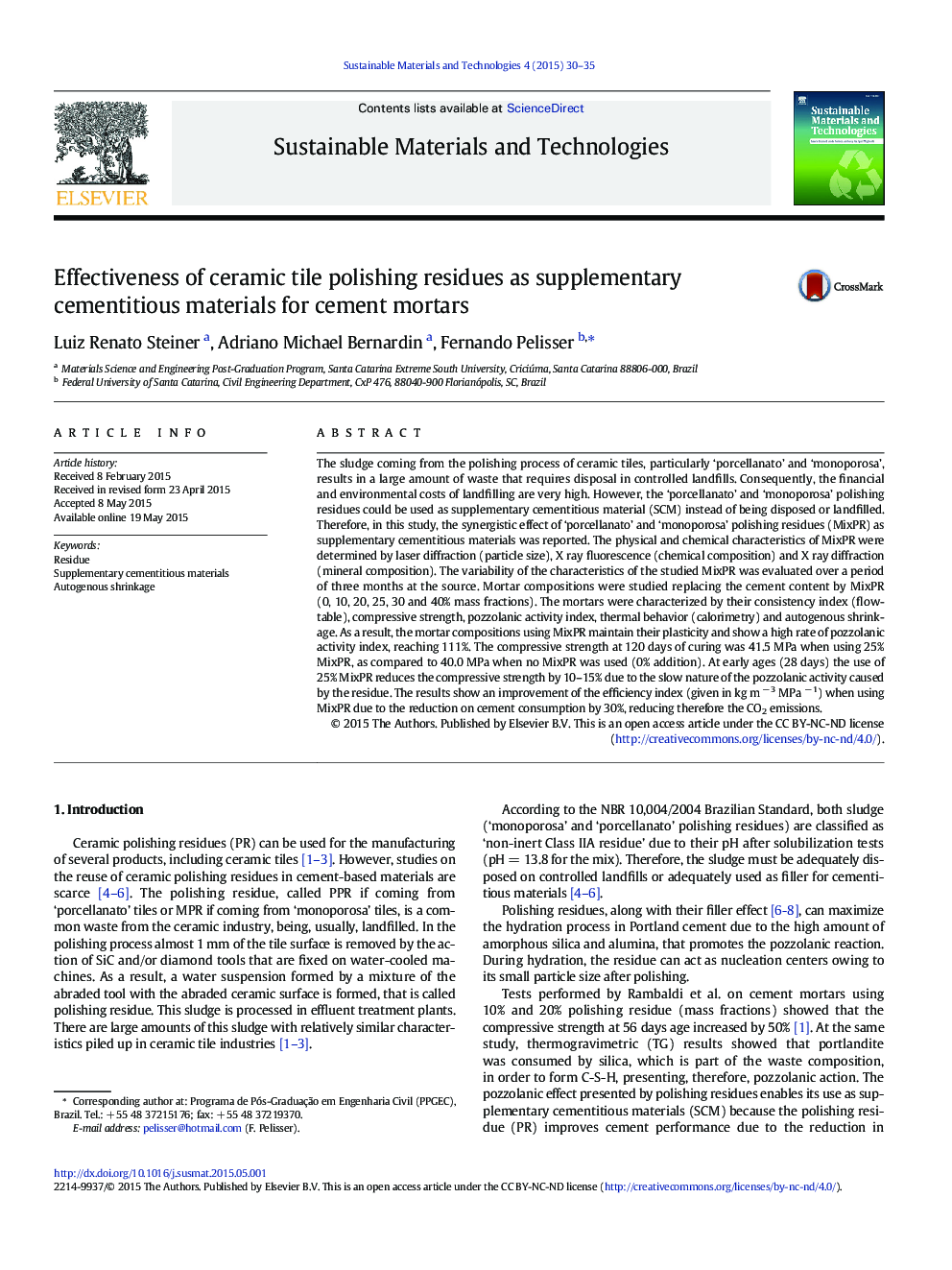| Article ID | Journal | Published Year | Pages | File Type |
|---|---|---|---|---|
| 865237 | Sustainable Materials and Technologies | 2015 | 6 Pages |
The sludge coming from the polishing process of ceramic tiles, particularly ‘porcellanato’ and ‘monoporosa’, results in a large amount of waste that requires disposal in controlled landfills. Consequently, the financial and environmental costs of landfilling are very high. However, the ‘porcellanato’ and ‘monoporosa’ polishing residues could be used as supplementary cementitious material (SCM) instead of being disposed or landfilled. Therefore, in this study, the synergistic effect of ‘porcellanato’ and ‘monoporosa’ polishing residues (MixPR) as supplementary cementitious materials was reported. The physical and chemical characteristics of MixPR were determined by laser diffraction (particle size), X ray fluorescence (chemical composition) and X ray diffraction (mineral composition). The variability of the characteristics of the studied MixPR was evaluated over a period of three months at the source. Mortar compositions were studied replacing the cement content by MixPR (0, 10, 20, 25, 30 and 40% mass fractions). The mortars were characterized by their consistency index (flow-table), compressive strength, pozzolanic activity index, thermal behavior (calorimetry) and autogenous shrinkage. As a result, the mortar compositions using MixPR maintain their plasticity and show a high rate of pozzolanic activity index, reaching 111%. The compressive strength at 120 days of curing was 41.5 MPa when using 25% MixPR, as compared to 40.0 MPa when no MixPR was used (0% addition). At early ages (28 days) the use of 25% MixPR reduces the compressive strength by 10–15% due to the slow nature of the pozzolanic activity caused by the residue. The results show an improvement of the efficiency index (given in kg m − 3 MPa − 1) when using MixPR due to the reduction on cement consumption by 30%, reducing therefore the CO2 emissions.
